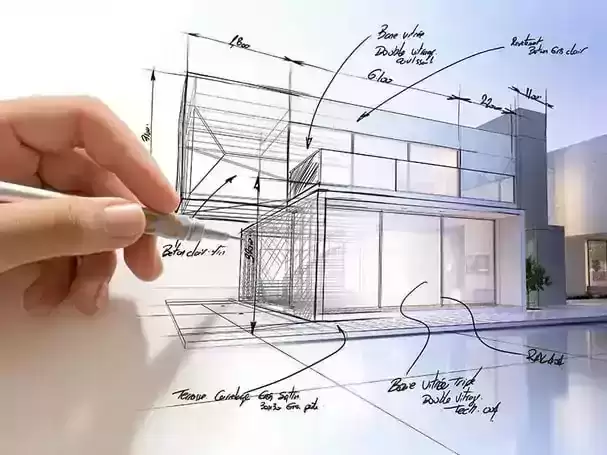An effective design can go a long way in reducing your project budget, especially if you can find compromises in large parts of the scope.
Plan efficiently, avoid large openings and open spaces, and your savings can be significant.
All you have to do is research your options and collaborate with a design team that is willing to work towards your financial goals.

Architectural design efficiency
Efficient space planning
Homes with less floor space cost less to design, build and maintain.
According to the National Association of Home Builders (NAHB), the average floor space for a single-family home in the United States was 2,584 square feet in the first quarter of 2019.
compared to 1,400 square feet in the 1970’s.
Remarkably, the 85% increase in floor area coincides with a 12% decrease in the size of the average American family.
If this statistic makes you question our efficient use of space, you’re not alone.
The University of California Center for Everyday Families recently conducted a study that looked at how American families use the space in their homes.
The study found that typical families spend 68% of their time in the kitchen and family room, while dining rooms, living rooms, recreation rooms and porches are not used as much.
When you work out the size of your home, think about the rooms you need, keep in mind that every square foot comes with design and construction costs.
Once you move in, you have to heat, cool and maintain your entire home – including spaces you rarely use.
Work with your architect to set your floor space to a reasonable shape—one that works for your family’s functions and doesn’t create an expensive, useless, dead space.
Streamlined finishes
Your choice of interior finishes can make or break your budget, the range makes up 22% of total construction costs and presents an excellent opportunity to find compromises.
As you design your home, research your options for flooring, finishes, and doors. Next, work with your architect to balance aesthetics, quality, and cost.
Remember – in construction, anything “custom” or “specialized” usually commands a premium.
Flooring is a big investment, but don’t let costs alone drive your decision. Flooring covers every square foot of your home and takes a lot of abuse from your day-to-day jobs.
They also affect your senses of touch and sight. If you want your floors to serve you well,
learn about the materials, and choose those you find visually appealing, comfortable, and durable.
Trim gives a sense of completeness and comfort to a room,
and it adds up to hundreds of linear feet when you consider every baseboard, trim and cornice in your home.
If you want to save on this perk, try to keep it simple – the more ornate your trim, the more you’ll pay.
Material and size matter too, choose a grade of paint over stained wood,
or use medium-density fiberboard (MDF) if you want real savings.
Choose shorter panels and narrow slipcovers and think twice about whether you need cornices and chair rails before you splurge.
Besides decoration, doors can make up nearly 5% of your home’s construction costs.
Where size and materials are important cost factors, as is customization –
If you need your doors cut to sizes that are not available, expect to pay a large premium.
Features such as glass may also inflate the price of your doors.
Other interior finishes, such as cabinets, counters, mirrors, banisters,
and wall finishes, include low- and high-end options.
With advice from your design team,
you can make informed compromises that allow you to save in some areas and splurge in others.

Structural design efficiency
The structure of a home—the foundation, exterior walls, load-bearing interior walls, floors,
and roof joists—can make up 27% of the total construction costs.
The architectural elements of your home largely determine the cost efficiency of the structure;
Keep this in mind when deciding on features
Like large windows and open concept spaces.
Avoid large openings
Floor-to-ceiling windows flood your home with natural light and offer stunning views.
But the vents they create often require costly seismic reinforcement mechanisms.
Such as prefabricated shear walls or steel torque frames.
To avoid potential expenses, opt for smaller windows and use skylights to increase the natural light in your home.

The problem of large open spaces
Open concept floor plans are very popular for good reason – more daylight
and improved area functionality and better sightlines.
If you are planning to have an open concept space in your home,
keep in mind the spacious living area
They create leave the floor above in need of specialist support.
It can take the form of laminated veneer lumber (LVL) or steel beams,
sometimes with columns, all of which cost more than a load-bearing stud wall.
Besides large windows and wide open spaces,
try to avoid complex features such as vaulted and coffered ceilings –
It can also add a significant premium to the structure of your home.
For more architectural news
Use the most economical building materials such as bricks and concrete


 العربية
العربية